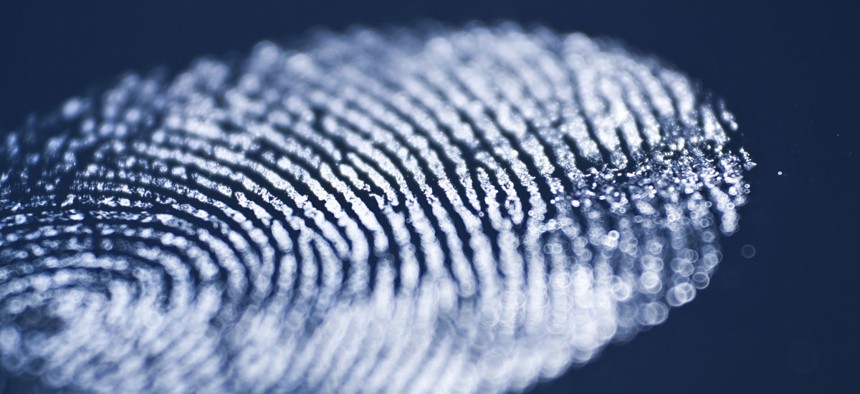After OPM Debacle, Three-Step Biometric ID Checks Are Coming

skyla80/Shutterstock.com
Of the 24 major federal departments, OPM and 15 other agencies can log into government systems with only a username and password.
Expect computers to require that federal personnel use a smartcard, a password and their fingerprints before logging on, as a way to shore up defenses in the wake of a massive government cyber assault, a top official from the Department of Homeland Security said this week.
So-called three-factor authentication goes one step further than today's governmentwide sign-on routine, which involves only a badge and PIN, if that. Most agencies, including the recently hacked Office of Personnel Management, only require a PIN.
Foreign spies, who allegedly extracted details on millions of current and former federal employees from OPM’s network, might change that.
"Several organizations are looking at three-factor authentication," said Shonnie Lyon, acting director of the DHS Office of Biometric Identity Management. Lyon, who was speaking at an industry event on Thursday, did not name the agencies. "I think that's the way things are going to have to go."
Of the 24 major federal departments, OPM and 15 other agencies can log into government systems with only a username and password, according a 2015 report on compliance with the Federal Information Security Management Act. It is unclear how attackers managed to sneak into OPM's system.
The sign-in procedure Lyon envisions would have a federal worker slide in a smartcard containing a digitized fingerprint, swipe a finger against a touchpad, and enter a PIN to access a government network.
Upgraded technology would confirm the person at the keyboard and the authorized cardholder are one and the same.
"I'm verifying that the identity that resides on this card is the same person that's actually keying in the computer," Lyon explained in a brief interview.
During his public remarks, Lyon said this setup is more privacy oriented than an arrangement where the computer user's fingerprint is crosschecked against prints stored in a big biometrics database.
"You don't necessarily have to actually do a match," he said. "You just need to compare the print to what is on the card.
Homeland Security Presidential Directive-12, or HSPD-12, a post-9/11 policy, requires the use of a smartcard and PIN for accessing all agency networks and facilities.
Right now, an overwhelming majority of federal employees carry the badges, called personal identity verification, or PIV, cards. But few departments have activated the card’s digital capabilities, so the plastic often serves as a mere flash pass.
Lyon told Nextgov, "Most places use either a one-factor or a two-factor authentication, like, for example, for me, when I'm at my computer I take my card, I put it in my computer, it verifies, and then I have to put in my PIN number. And that's it."
"Whether or not private citizens are going to want to have a PIV-type card" is questionable, Lyon said during the event.
"But for OPM or any kind of government action, I think that you are going to see more and more organizations start going to three-factor authentication, so that they know who is in their network, who is logging in and you have the rights and the privilege to do that," he added.
It’s conceivable, however, that in the near future government workers might be able to swap those cards for iPhones.
Jim Williams, a former head of the DHS biometrics office, said, “The HSPD-12 card you had held up is a token” after Lyon put away his government-issued smartcard. Williams held up his smartphone and said, “This is a token, too. “
The two men were discussing potential uses of forensics for national security at a forum hosted by the American Council for Technology and Industry Advisory Council.
"The biometrics and the multifactor authentication is going to be tied to the smartphone," said Williams, now a private consultant.
Look just a bit further down the horizon for a three-step verification process that relies on unique hand gestures.
The Defense Researcher Advanced Projects Agency "is actually looking at using biometrics -- but not biometrics like face, print and iris -- active authentication like keystrokes and mouse movement," Defense Department biometrics chief engineer Will Graves said at the event.
Not to be outdone, the National Security Agency has tested the use of smartphones that recognize a user's handwriting motion traits, including the speed, acceleration and curve of finger scribbles.
(Image via skyla80/ Shutterstock.com)
NEXT STORY: Whose Job Is On the Line After the OPM Hack?



